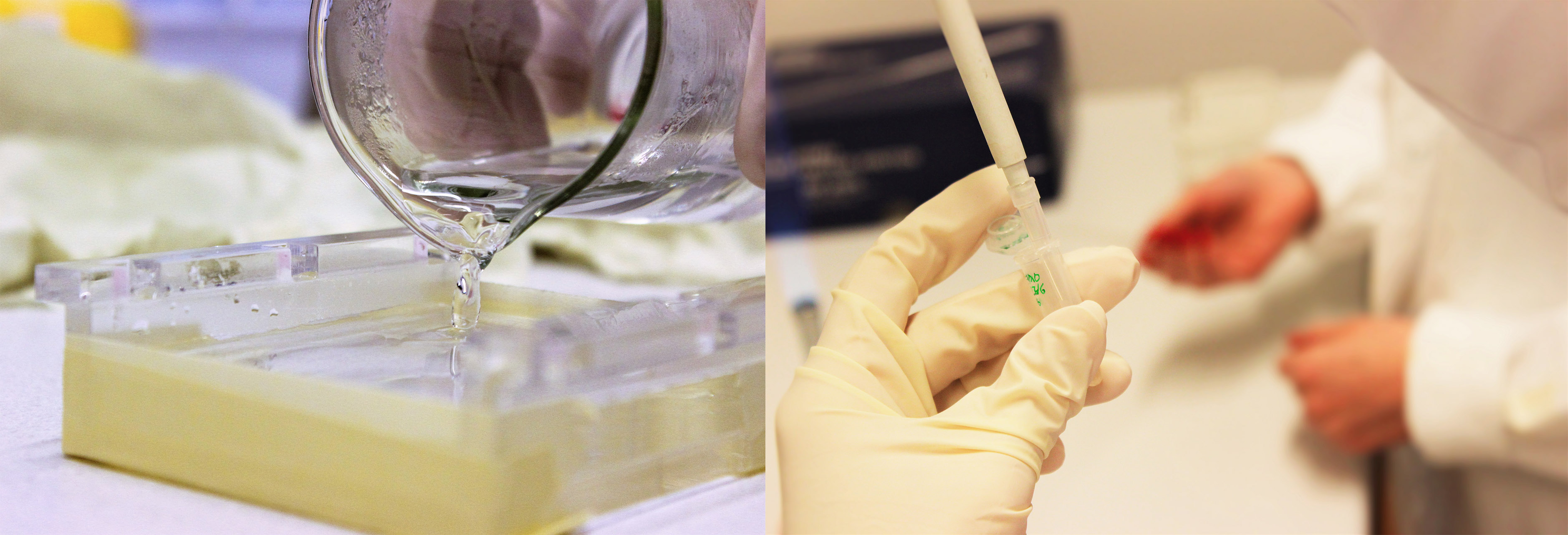Katarina.94 (Talk | contribs) |
Sarasvanberg (Talk | contribs) |
||
| (16 intermediate revisions by 2 users not shown) | |||
| Line 1: | Line 1: | ||
{{Linkoping_Sweden}} | {{Linkoping_Sweden}} | ||
| − | The original plan for | + | ==Results== |
| − | + | ---- | |
| − | A big part of | + | |
| + | The original plan for LiU iGEM was to utilize the standard assembly method to establish the final construct. However, the effectivity of this method was quite low and the approach on the assembly needed to be modified. The Gibson Assembly method was therefore selected, with its main advantage to assemble all DNA fragments in one step. By utilizing Gibson Assembly the transformation was successful and plenty of colonies were obtained. Although, not all of them contained the complete construct with all the DNA fragments of interest. The colonies with the proper base length were sequenced and it could be determined that [[Team:Linkoping_Sweden/Design#num3|Cas9]] and [[Team:Linkoping_Sweden/Design#num2|LIP]] had successfully been inserted into the vector, whilst [[Team:Linkoping_Sweden/Design#num4-5|sgRNA]], [[Team:Linkoping_Sweden/Design#num4-5|U6]] and [[Team:Linkoping_Sweden/Design#num6|Hygromycin cassette (Hyg)]] were not incorporated. Fortunately, a yellow fluorescent protein (YFP) was inserted into the construct to substitute for the Hyg selection. Furthermore, three constructs with the fragments [https://2016.igem.org/Team:Linkoping_Sweden/Parts#BBa_K2095000_-_LIP_promoter LIP], [https://2016.igem.org/Team:Linkoping_Sweden/Parts#mRFP1_under_controll_of_LIP_promoter LIP-RFP] and [https://2016.igem.org/Team:Linkoping_Sweden/Parts#RBCS2_terminator terminator] were successfully obtained. | ||
| + | |||
| + | |||
| + | A big part of LiU iGEM’s project is the alga Chlamydomonas reinhardtii. The algae successfully grew both in light and dark conditions. The constructed vector, which included [[Team:Linkoping_Sweden/Design#num6|YFP instead of Hyg]], was transformed into the algae with electroporation. Since no hygromycin resistant could be utilized everything grew on the plates and there was no selection on the plates. The colonies were screened with fluorescent microscope, but because of the difficulties to detect YFP the conclusion was that the electroporation was not successful. | ||
| + | |||
| + | [[File:T--Linkoping Sweden--Results.jpg]] | ||
{{Linkoping_Sweden/Footer}} | {{Linkoping_Sweden/Footer}} | ||
Latest revision as of 17:49, 19 October 2016
Results
The original plan for LiU iGEM was to utilize the standard assembly method to establish the final construct. However, the effectivity of this method was quite low and the approach on the assembly needed to be modified. The Gibson Assembly method was therefore selected, with its main advantage to assemble all DNA fragments in one step. By utilizing Gibson Assembly the transformation was successful and plenty of colonies were obtained. Although, not all of them contained the complete construct with all the DNA fragments of interest. The colonies with the proper base length were sequenced and it could be determined that Cas9 and LIP had successfully been inserted into the vector, whilst sgRNA, U6 and Hygromycin cassette (Hyg) were not incorporated. Fortunately, a yellow fluorescent protein (YFP) was inserted into the construct to substitute for the Hyg selection. Furthermore, three constructs with the fragments LIP, LIP-RFP and terminator were successfully obtained.
A big part of LiU iGEM’s project is the alga Chlamydomonas reinhardtii. The algae successfully grew both in light and dark conditions. The constructed vector, which included YFP instead of Hyg, was transformed into the algae with electroporation. Since no hygromycin resistant could be utilized everything grew on the plates and there was no selection on the plates. The colonies were screened with fluorescent microscope, but because of the difficulties to detect YFP the conclusion was that the electroporation was not successful.









